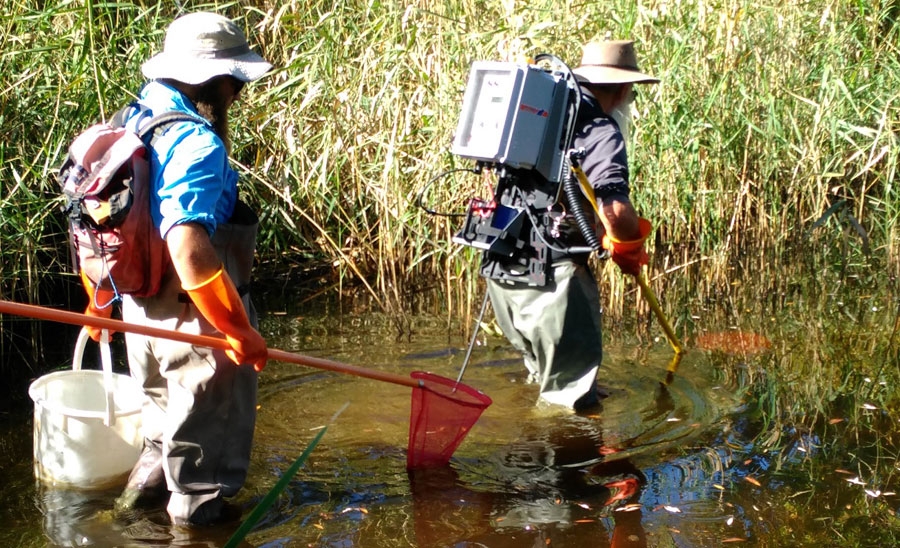Wondering what’s the latest news on Southern Pygmy Perch? As we’ve covered previously, Gunning District Landcare is working to conserve the endangered Southern Pygmy Perch and its habitat in our region. Southern Pygmy Perch is now only found in a very few locations in NSW, and we are very fortunate to be one of them. This means we have an opportunity (and responsibility!) to ensure that this local endangered fish does not go extinct.
Southern Pygmy Perch was originally native to large areas in the Lachlan, Murrumbidgee and Murray river catchments, but its distribution has been severely affected by the introduction of exotic fish, the spread of disease, and habitat modification and loss. Southern Pygmy Perch is also likely to be vulnerable to the effects of a warming climate.
In 2017, we commissioned fish experts Mark Lintermans and Luke Pearce to prepare a Local Action Plan to help guide local conservation efforts for Southern Pygmy Perch. Consistent with their recommendations, in March-April 2018 we organised for Mark Lintermans to survey fish in several local waterways. He was not only looking for Southern Pygmy Perch, but also for other fish (especially Redfin Perch) that are predators of Southern Pygmy Perch. This information is important when considering which sections of our creeks and rivers may be suitable for re-introduction attempts in the future. We will provide an update on the results of Mark’s monitoring work in the coming months.
We plan to continue monitoring local populations of Southern Pygmy Perch in the future and hope to involve community members to help with annual fish surveys — please get in touch if you are interested to be involved.
Also in March-April 2018, we engaged riparian expert Lori Gould to undertake habitat mapping along local waterways, and to assess nominated farm dams for their suitability as refuge sites for Southern Pygmy Perch. Many landholders in the Gunning region jumped at the chance to help conserve the endangered fish by nominating their damns as potential refuge sites. Lori has been kept busy speaking to landholders and visiting numerous properties. It is going to be very difficult to decide which dams will be selected to receive support in this round, but we are actively looking for more funding to expand this work into the future. So if you missed out this time, you will still be on the register and we will be able to consider you down the track.
If you are interested in improving the habitat qualities of your farm dams and riparian areas, you might be interested in the information below taken from our local action plan for Southern Pygmy Perch. There is also more detailed information available in this excellent brochure from the NSW Government.
What makes a suitable refuge dam for Southern Pygmy Perch?
Essential criteria:
- Permanent water, even during extreme droughts
- Abundance of aquatic plants – especially those that are emerged, submerged and floating
- No predatory or alien fish species present
- Good water quality
Desirable criteria
- No or limited stock access / dam fenced to exclude stock
- Abundant fringing vegetation, reeds, grass, shrubs and trees
- Dam not used as water supply
- Dam has a catchment in good condition. That is, good ground cover is maintained year round
- Additional habitat in the form of logs, rocks etc.
What makes a potential stream stocking location for Southern Pygmy Perch?
Essential criteria:
- Permanent water, even during extreme droughts
- Abundance of aquatic plants – especially those that are emerged, submerged and floating
- No predatory or alien fish species present
- Barriers to prevent alien fish invading
- Good water quality.
Desirable criteria
- No or limited stock access / stream fenced to exclude stock
- Abundant fringing vegetation, reeds, grass, shrubs and trees
- Low or no erosion
- Stream has a catchment in good condition. That is, good ground cover is maintained year round
- Low sediment loads
- Cooperative landholders and neighbours
- Few or no weeds, particularly blackberry and willows.


